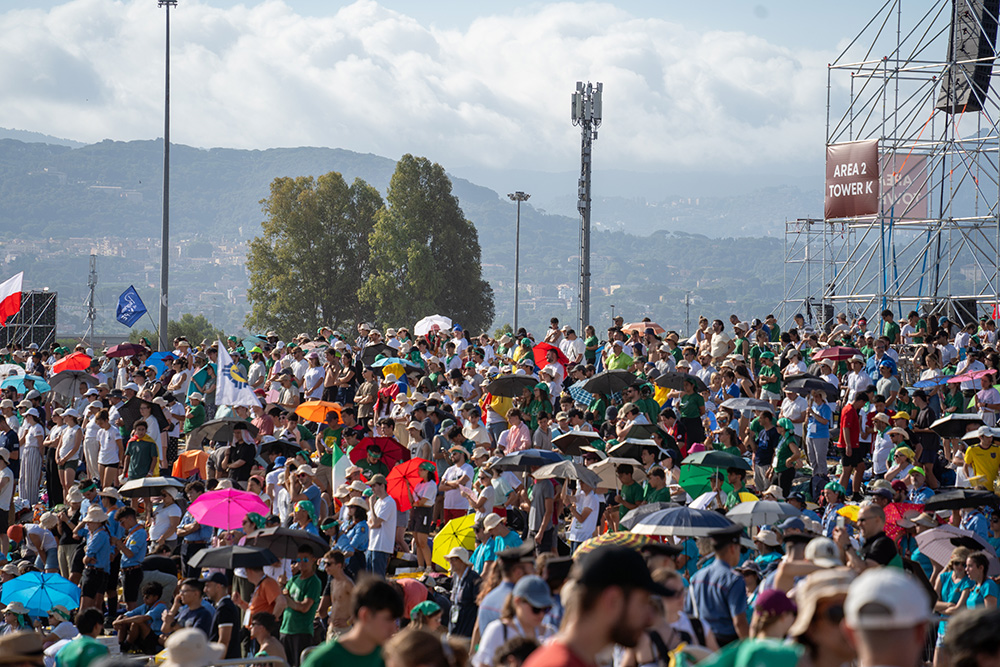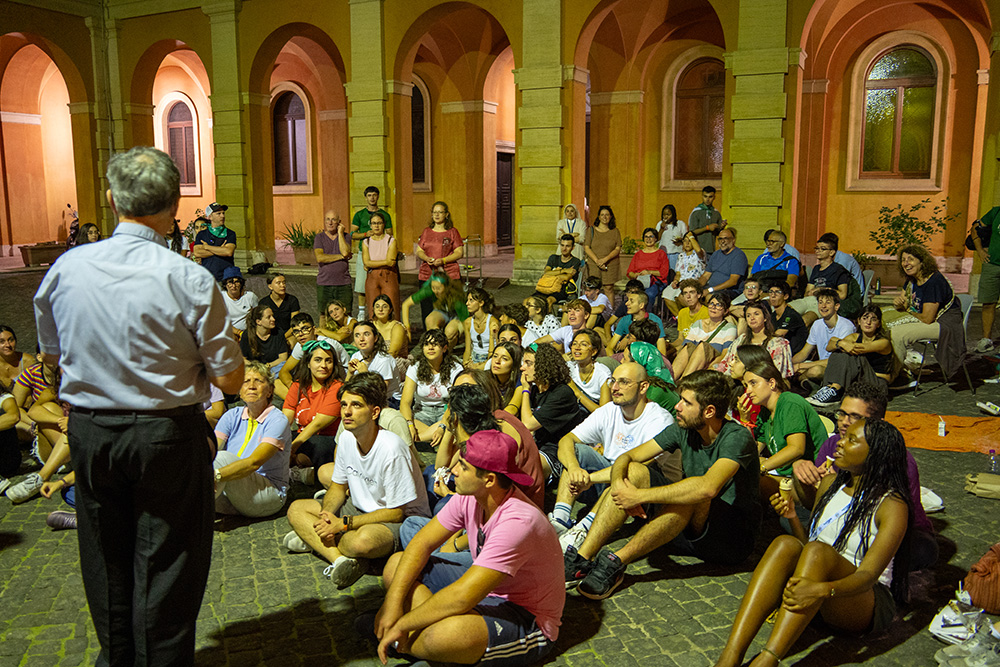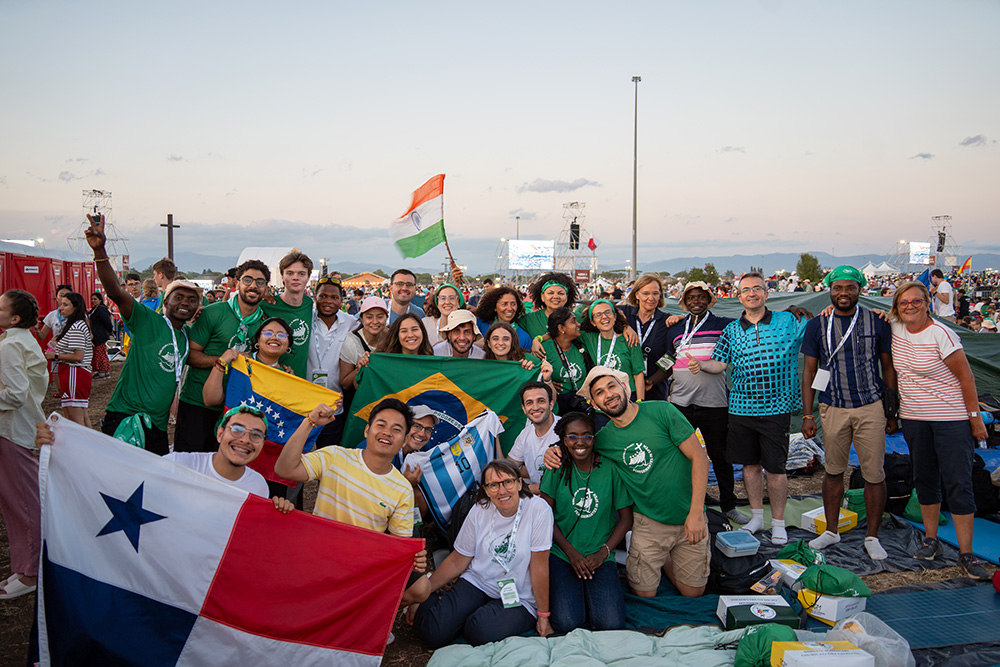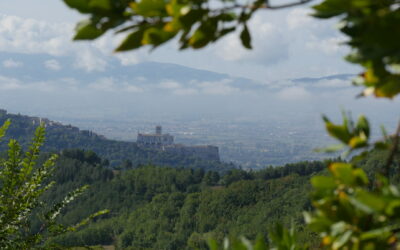Watching the live broadcast of the vigil in Tor Vergata on the outskirts of Rome, and seeing those images of an immense multitude, you can’t help but wonder: what did the million young people come here to find? Was it to be close to Pope Leo XIV? That doesn’t seem like sufficient motivation to me. To get to know Rome? Maybe, but they would surely not have chosen that kind of accommodation, food and transport. The answer was found in the deep and prolonged silence during the hour of adoration. These young men and women from all over the world were attracted by Jesus, perhaps without even knowing it, to a personal and communitarian encounter, where He undoubtedly spoke to the heart of each one who returns home changed, with a stronger faith, with an experience of the divine that they will never forget.


The Jubilee week dedicated to young people began on 28 July and ended on Sunday 3 August 2025. Many activities were organised to welcome those who came to Rome for these days – visits to historical sites, to the basilicas, cultural events, concerts and catechesis.
The Focolare Movement also offered four special itineraries in Rome following the Pilgrimage of the Seven Churches, conceived by St. Philip Neri: a historical itinerary that has accompanied pilgrims since the 16th century. It was a journey of faith and fraternal communion, consisting of prayer, songs and reflections on Christian life, with group activities, catechesis and testimonies, aided by a booklet of meditations to go into spiritual depth in the light of the charism of unity. The large group that took part in the programme consisted of young people who spoke English, Hungarian, Dutch, Italian, German, Romanian, Korean, Spanish and Arabic.
The entire ‘journey’ was based on four key ideas: pilgrimage (a journey), the holy door (an opening), hope (looking ahead) and reconciliation (making peace).
“Hope” is the word that echoed in Samaher’s testimony, a 28-year-old Syrian woman: “My childhood years were painful, dark and lonely. Home wasn’t a safe place for a child because of the conflicts, nor was society, because of bullying. I faced everything alone, unable to share it with anyone, even attempting suicide in secret due to severe depression and fear. The Gospel changed me. After the life within me had died and everything had become dark… the Gospel gave me back the light.”
The catechesis took place at the Focolare meeting point and was led by Tommaso Bertolasi (philosopher), Anna Maria Rossi (linguist) and Luigino Bruni (economist). “Isn’t a gaze that starts from love and arouses love the most concrete face of hope?” was the provocative question posed by Anna Maria Rossi to the young pilgrims.



José, an 18-year-old from Panama, confirmed this in the testimony he shared about the period of his illness: “My experience shows that when you put the art of loving into practice, which consists in seeing Jesus in everyone, loving everyone, loving your enemies, loving as yourself, loving one another… not only does your life change but other people’s lives change too. It was precisely this art of loving, which many people shared with me, that created a balance that was so strong it helped me not to collapse in difficult moments, supporting and strengthening me through every obstacle I encountered.”
Laís from Brazil also did not hide the challenges she faced because of her parents’ separation: “There were times when I didn’t understand why they lived apart, and I wanted them to be together again. However, when I became more aware of what had happened between them, I was able to ask sincere questions, and neither of them hid the truth. This helped me to accept the reality of our family. Today they have a friendly relationship with one another and this, for me, is an example of maturity, forgiveness and true love, which goes beyond difficulties and mistakes. Starting again is possible when we really put ourselves out there.”
Pope Leo made several unscheduled appearances and gave unscheduled greetings, such as when, at the welcome Mass, he wanted to be present at the conclusion by travelling in the “popemobile” through St. Peter’s Square and the Via della Conciliazione packed with young people, to greet them. Speaking spontaneously, he said:



Then, on Saturday 2 August, as nature offered a magnificent sunset, responding to questions from young people in Tor Vergata, he reiterated his appeal: “Dear young people, love one another! Love one another in Christ. Know how to see Jesus in others. Friendship can truly change the world. Friendship is a pathway to peace ”. He then added: ’To be free, we must start from a stable foundation, from the rock that supports our steps. This rock is a love that precedes us, surprises us and surpasses us infinitely: it is the love of God. (…) We find happiness when we learn to give ourselves, to give our lives for others.” And he pointed out the way to follow Jesus: ’Do you truly want to encounter the Risen Lord? Listen to his word, which is the Gospel of salvation! Seek justice, renewing your way of life, to build a more humane world! Serve the poor, witnessing to the good that we would always like to receive from our neighbour!”
During Sunday Mass, Pope Leo XIV told the young people that we are made “for an existence that is constantly regenerated in giving, in love. And it is in this way that we continually aspire to a “something more” that no created reality can give us; we feel such a great and burning thirst that no drink in this world can quench it.” He concluded his homily with a heartfelt invitation: “Dear young people, our hope is Jesus. (…)
In his farewell address, he described these days as “a cascade of grace for the Church and for the whole world.” He reiterated his cry for peace: “We are with the young people (…) from every land bloodied by war. (…) You are the sign that a different world is possible: a world of fraternity and friendship, where conflicts are addressed not with weapons but with dialogue.”
A companion by your side
This unique and unrepeatable experience of the 2025 Youth Jubilee has come to an end. On this incredible journey, we walked, sang and walked, danced, rejoiced and walked, prayed, laughed and walked… driven by a common goal and many travelling companions. Yes, because beyond the wonderful programme that enriched us culturally and spiritually, the image of thousands of young people like us walking will remain forever etched in our minds. Perhaps if we had asked some of them what their destination was, they would have replied something like: “We’re going to the church of Santa Maria Maggiore” or “We’re finally going to rest”, but I am equally convinced that if we had also asked them how they were doing it, they would have told us with eyes full of energy about the songs they sang, the young people they made friends with and the fullness of spirit that this walking together gave them. After all, for us, the Jubilee was just that: a journey like no other, in a city like no

other, where the dreams, hopes, joys and sorrows of a sea of people come together, where even if you walk alone, you still have a companion by your side, where the world is both tiny and immense, where everything cries out for Unity. We return home with a memory that will not easily fade, the memory of a United World that takes each other by the hand and walks, with heads held high and hearts filled with a greater spirit.
Mattia, Calabria (Italy)
Carlos Mana (with the collaboration of Paola Pepe)
Photo © Joaquín Masera – CSC Audiovisivi




0 Comments